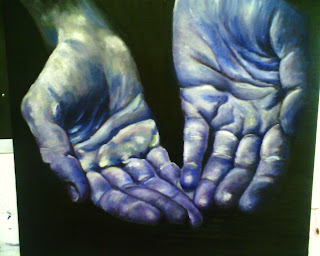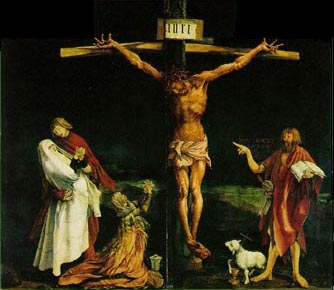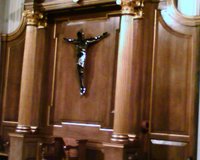Exhibtions:
SOLO EXHIBITIONS
Greenbelt Arts Festival, Cheltenham Racecourse, 2005.
Coventry Cathedral, 2005.Guildford Cathedral, 2005.
Ripon Cathedral, 2005.
Bradford Cathedral, 2004.
St Nicholas Church, Sevenoaks, 2004.
University of Gloucestershire, 2003.
Teddington Baptist Church, 2002.
St. Michael’s Church, Bath, 2002.
Gloucester Cathedral, 2002.
St. Stephen’s Church, Westbourne Pk, London 2001.
Bath Abbey, 1999.
Christchurch, Abingdon, 1998.
Holy Trinity, Cambridge, 1998.
L’Arc-en-Ciel Galerie, Poitiers, France, 1997.
Winchester Cathedral, 1997.
St. Martin-in-the-Fields Gallery, London 1997.
St. Mary’s Church, Nottingham 1996.
The Black Swan Art Centre, Frome, 1996.
St. Martin-in-the-Fields Gallery, London 1995.
The Gallery, 74 South Audley St., London, 1994.
St. Mary’s Church, Nottingham 1994.
Cooper’s Gallery, Bristol Old Vic, 1994.
St. Martin-in-the-Fields Gallery, London 1994.
St. Thomas’s Hospital, London, 1989.
GROUP EXHIBITIONS
Presence, St.Paul’s Cathedral, London, 2004.
Holy Trinity, Cheltenham, 2003.
Edinburgh City Art Centre, 1999.
International Festival of Arts, Kunming, China, 1999.
Starlight Gallery, Southampton, 1996.
Soul Survivor Festival, 1996 - 2003 (Also Curating).
Poole Arts Centre, 1996.
Greenbelt Arts Festival, 1993.
Coventry Gallery, London, June 1993.
Coventry Gallery, London, May 1993.
London Group Open Exhibition, Barbican, 1992.
Johnson Wax Kiln Gallery, Farnham, 1992.
Portsmouth Cathedral, 1992.
Milton Keynes Exhibition Gallery, 1991.
Residencies:
Shrewsbury School, 2002.
Dean Close School, Cheltenham, 2002.
St. John’s School, Leatherhead, 2000.
Dauntsey’s School, Devizes, 2000.
Clifton College, Bristol, 1997.
St. Mary’s School, Ascot, 1997.
Oundle School, Northants, 1997.
Denstone College, Uttoxeter, 1997.
Dean Close School, Cheltenham, 1996.
Uppingham School, Leicestershire, 1996.
Stowe School, Buckingham, 1995.
St. Gregory’s School, Bath, 1994.
Canford School, 1994.
Commissions:
Lambeth Palace, 2002, "Dream Dreams".
St. Mary’s School, Ascot, 1998, "Our Lady Protectress of the Unborn Child".





 Dali - Jesus by Maya (stencil artist), Cambridge
Dali - Jesus by Maya (stencil artist), Cambridge



















 Chris OfiliThe Upper Room 1999-2002
Chris OfiliThe Upper Room 1999-2002